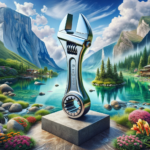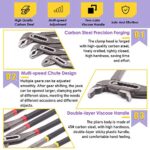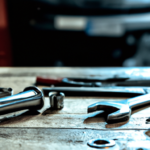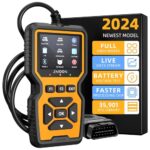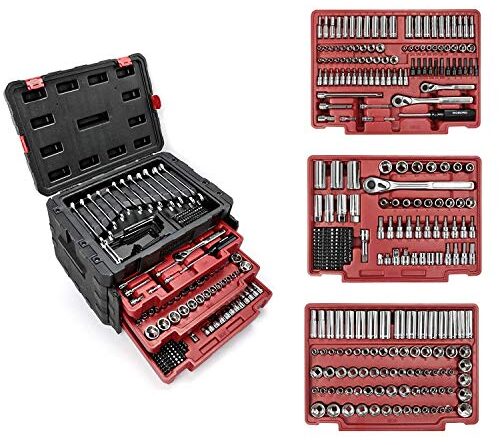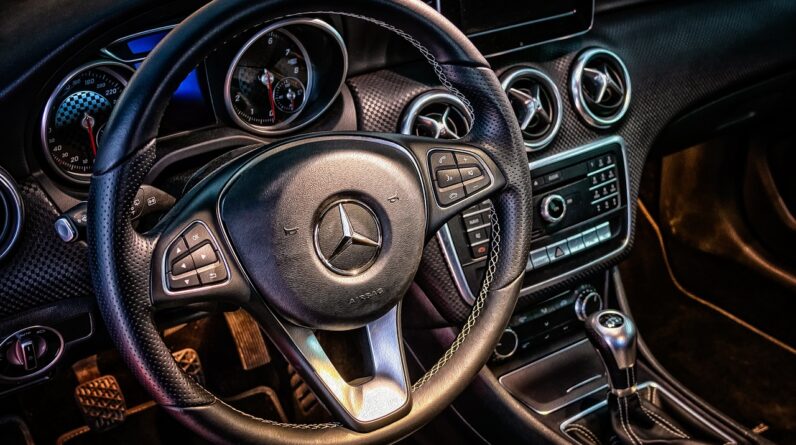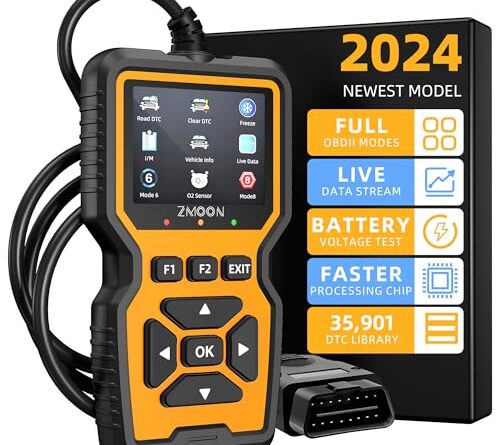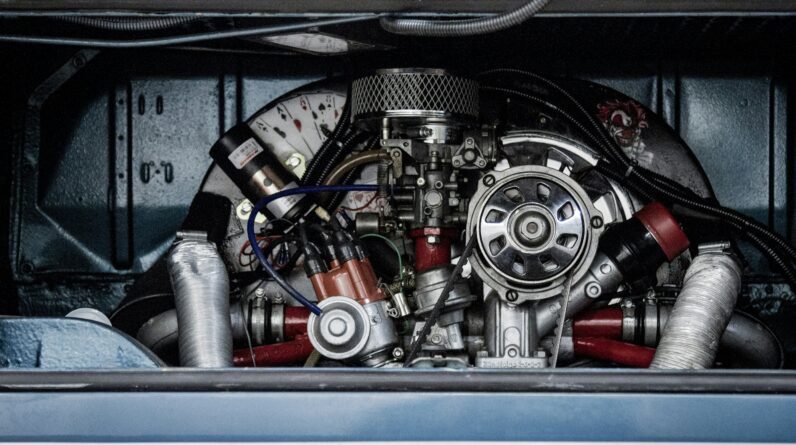
Disclaimer: This post may contain affiliate links. As an Amazon Associate, we earn from qualifying purchases.
Imagine you have a car sitting in your garage that needs some serious engine work. You’re determined to tackle the job yourself, but the question is: what tools do you actually need to remove an engine? Whether you’re a novice or a DIY enthusiast, this article will provide you with a handy list of essential tools to successfully undertake this challenging task. So, get ready to roll up your sleeves, grab those wrenches, and dive into the world of engine removal!
Engine Removal Basics
Understanding engine removal process
Removing an engine from a vehicle may seem like a complex task, but with the right tools and knowledge, it can be done efficiently. The engine removal process involves disconnecting various components, securing the engine, and lifting it out of the engine bay. Understanding the steps involved and having the necessary tools at hand is crucial to ensure a smooth and successful engine removal.
Ensuring safety during engine removal
Safety should always be the top priority when working on any automotive project, and engine removal is no exception. It is essential to take necessary precautions to prevent accidents and injuries. This includes wearing protective gear such as safety goggles, gloves, and coveralls to protect yourself from debris, chemicals, and moving parts. Additionally, securing the vehicle with wheel chocks, disconnecting the battery to prevent electrical mishaps, and having a fire extinguisher nearby are crucial safety measures.
General Tools
Socket set
A socket set is a must-have tool for any engine removal project. It consists of various sizes of sockets that are used to loosen and tighten bolts and nuts. The ratchet handle with the socket attachments allows for convenient and efficient removal of fasteners.
Wrench set
A set of wrenches is essential for engine removal as it is used to tighten or loosen nuts and bolts in tight spaces where a socket set may not fit. Having a combination of open-end and box-end wrenches of different sizes ensures versatility and ease of use.
Screwdriver set
A set of screwdrivers is necessary for removing screws and other fasteners during the engine removal process. It is recommended to have a variety of sizes and types of screwdrivers, including flathead and Phillips head, to accommodate different types of screws.
Pliers
Pliers are versatile tools that come in handy during engine removal. They can be used for gripping, bending, and cutting wires or hoses. Having a set of different types of pliers, such as slip joint pliers and needle-nose pliers, ensures versatility and efficiency.
Hammer
A hammer is a useful tool for loosening stubborn bolts or gently tapping components into place. It is important to have a hammer with a non-marring head to prevent damage to delicate engine parts.
Torque wrench
A torque wrench is necessary for tightening fasteners to the manufacturer’s specified torque settings. It ensures that bolts and nuts are tightened correctly, preventing over-tightening or under-tightening, which can lead to problems later on.
Ratchet straps
Ratchet straps are used to secure and stabilize the engine during the lifting and removal process. They provide extra support and help prevent the engine from swinging or shifting, ensuring safety and stability.
Trolley jack
A trolley jack, also known as a floor jack, is used to lift the vehicle off the ground to create space for the engine removal process. It is essential to have a jack with a sufficient weight capacity and stability to safely raise the vehicle.

Engine crane
An engine crane, also known as a cherry picker, is the primary tool used for lifting and removing the engine from the engine bay. It consists of a hydraulic lifting mechanism and a boom that can be extended and adjusted to reach the engine. Having a sturdy and reliable engine crane is vital for a successful engine removal.
Shop towels
Shop towels are essential for keeping the work area clean and for wiping off dirt, oil, and other debris from engine components. They help maintain a tidy and organized workspace throughout the engine removal process.
Specific Engine Removal Tools
Engine hoist
An engine hoist is a specialized tool designed specifically for lifting and removing engines. It is similar to an engine crane but is typically smaller and more portable. An engine hoist is ideal for projects where space is limited or if a full-size engine crane is not available.
Engine stand
An engine stand is used to securely hold and support the engine once it has been removed from the vehicle. It allows for easy access to all sides of the engine for inspection, repair, or rebuilding. An engine stand is a valuable tool for any engine removal project, providing stability and ease of work.
Engine support bar
An engine support bar is used to support the engine while disconnecting and removing the engine mounts. It helps distribute the weight of the engine evenly, preventing damage to the mounts and ensuring a smooth and controlled removal process.
Engine lift plate
A lift plate is attached to the engine to provide a secure connection point for the engine hoist or crane. It ensures stability and prevents damage to the engine during lifting and removal.
Flywheel locking tool
A flywheel locking tool is used to immobilize the flywheel or flexplate to prevent it from rotating when loosening or tightening bolts. It is essential for tasks such as removing the crankshaft pulley or replacing the clutch.
Timing gear puller
A timing gear puller is a specialized tool used to remove the timing gears or sprockets from the engine. It is necessary when performing tasks such as replacing the timing belt or chain.
Crankshaft pulley holder
A crankshaft pulley holder is used to hold the crankshaft pulley in place while loosening or tightening the central bolt. It prevents the pulley from rotating and allows for the proper torque to be applied without damaging the engine.
Gasket scraper
A gasket scraper is a tool used to remove old gaskets and sealants from engine surfaces. It helps ensure a clean and smooth mating surface, which is crucial for achieving proper sealing when reassembling the engine.
Hose clamp pliers
Hose clamp pliers are designed specifically for removing and installing hose clamps. They have a unique shape that allows for easy access to clamp the ends together and loosen or tighten the clamp as needed.
Oil filter wrench
An oil filter wrench is used to remove and install oil filters. It provides a secure grip on the filter, allowing for easy removal and prevention of damage to the filter or engine.
Miscellaneous Equipment
Safety goggles
Safety goggles are essential for protecting your eyes from debris, chemicals, and sparks during the engine removal process. They should be worn at all times to prevent eye injuries.
Gloves
Wearing gloves is crucial to protect your hands from sharp edges, hot surfaces, chemicals, and dirt during engine removal. Choose gloves that are comfortable, provide good dexterity, and offer protection against the specific hazards you may encounter.
Coveralls
Coveralls are recommended to protect your clothing from grease, oil, and other contaminants during the engine removal process. They provide full-body coverage and help keep you clean and comfortable while working.
Fire extinguisher
Having a fire extinguisher nearby is essential in case of any mishaps or accidents that may lead to a fire. It is important to have a fully functional and easily accessible fire extinguisher in the workspace to ensure immediate action can be taken if needed.
Floor jack
In addition to a trolley jack, a floor jack can come in handy during the engine removal process. It offers additional lifting support and allows for more flexibility when raising the vehicle off the ground.
Wheel chocks
Wheel chocks are used to prevent the vehicle from rolling or moving during the engine removal process. They provide additional safety by securing the vehicle in place and preventing any unintended motion.
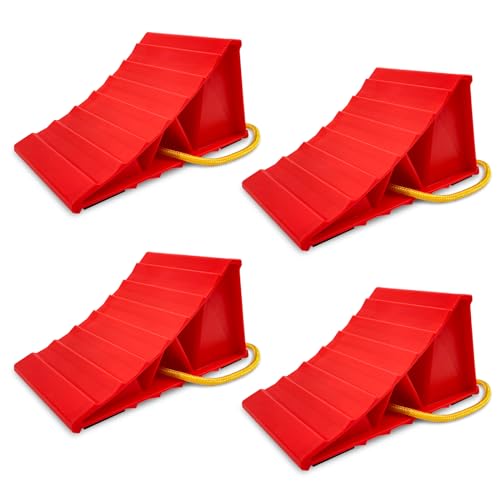
Drip pan
A drip pan is essential for catching and containing any fluids that may leak or spill during the engine removal process. It helps keep the workspace clean and prevents environmental contamination.
Wire brush
A wire brush is useful for removing rust, dirt, and debris from engine components. It helps prepare surfaces for inspection or repair and ensures a clean and smooth finish.
Bungee cords
Bungee cords are handy for securing loose wires, hoses, or components during the engine removal process. They provide additional support and help prevent damage or tangling of various parts.
Mechanic’s creeper
A mechanic’s creeper is a wheeled platform that allows you to comfortably slide under the vehicle while working on the engine. It provides easy access to hard-to-reach areas and helps reduce strain on your back and joints.
Supporting Accessories
Extension bars
Extension bars are used with sockets and ratchets to provide additional reach in tight or hard-to-access areas. They allow for flexibility and ease of use when removing or tightening fasteners.
Universal joint
A universal joint, also known as a u-joint, is a flexible coupling used with sockets and ratchets. It allows for a smooth and adjustable angle of the socket, making it easier to access bolts and nuts in confined spaces.
Socket adapters
Socket adapters are used to convert the drive size of a socket, allowing it to fit different size ratchets or handles. They provide versatility and allow for the use of various socket sizes with a single tool.
A flex head ratchet is a ratchet with a hinged joint that allows for a greater range of motion. It is particularly useful in tight spaces where a standard ratchet may not fit or when a socket needs to be used at an angle.
Rubber mallet
A rubber mallet is a non-damaging hammer used to gently tap or persuade components into place. It helps prevent damage to delicate engine parts while providing the necessary force to make adjustments.
Power drill
A power drill is useful for tasks such as removing or installing bolts, drilling holes, or using as a power source for other tools during the engine removal process. It provides additional convenience and speed when working on engine components.
Wire connectors
Wire connectors, such as butt connectors and crimp connectors, are used to join and secure electrical wires during the engine removal process. They ensure proper electrical connections and prevent issues such as short circuits or loose wiring.
Electrical tape
Electrical tape is used to insulate and protect electrical connections. It helps prevent moisture or dirt from interfering with the electrical system and ensures a secure and reliable connection.
Silicone sealant
Silicone sealant is used to create a watertight and airtight seal between mating engine surfaces. It helps prevent leaks and provides additional protection against contaminants. Silicone sealant is particularly useful when reassembling engine components.
Thread locker compound
Thread locker compound is used to prevent fasteners from loosening due to vibration. It creates a secure bond between the threads and helps maintain the tightness of bolts and nuts, ensuring long-term reliability.
Diagnostic Equipment
OBD2 scanner
An OBD2 scanner is a valuable tool for diagnosing engine issues and reading trouble codes. It connects to the vehicle’s onboard diagnostic system and provides real-time data and diagnostic information.
Compression tester
A compression tester is used to measure the compression pressure in each cylinder of the engine. It helps identify any potential issues with the engine’s internal components, such as piston rings or valves.
Vacuum gauge
A vacuum gauge is used to measure the vacuum pressure in the intake manifold of the engine. It provides information about the engine’s overall performance and can help identify issues such as leaks or improper combustion.
Digital multimeter
A digital multimeter is a versatile tool used to measure electrical voltage, current, and resistance. It is essential for diagnosing electrical issues, testing sensors, and ensuring proper electrical connections during the engine removal process.
Fuel pressure gauge
A fuel pressure gauge is used to measure the fuel pressure in the fuel system. It helps identify issues such as fuel pump failure, clogged fuel lines, or faulty fuel pressure regulators.
Oil pressure gauge
An oil pressure gauge is used to measure the oil pressure in the engine. It provides critical information about the lubrication system’s performance and can help identify issues such as oil pump failure or clogged oil passages.
Coolant pressure tester
A coolant pressure tester is used to pressurize the coolant system and check for leaks or other issues. It helps identify problems such as coolant leaks, faulty radiator caps, or blown head gaskets.
Timing light
A timing light is commonly used to check and adjust the ignition timing of the engine. It provides a visual indication of when the spark plug fires relative to the engine’s rotation, ensuring optimal performance.
Fuel injection tester
A fuel injection tester is used to diagnose fuel injection system issues. It allows for testing and measuring fuel pressure, injector pulse duration, and fuel spray pattern, helping identify any problems with the fuel delivery system.
Ignition spark tester
An ignition spark tester is used to check the ignition spark of the engine. It connects to the spark plug wire and provides a visual indication of the strength and consistency of the spark, allowing for diagnosis of ignition system issues.
Lubricants and Fluids
Engine oil
Engine oil is essential for lubricating the engine’s moving parts, reducing friction, and preventing excessive wear. It is necessary to have the appropriate type and grade of engine oil for your specific engine during the removal and reassembly process.
Coolant
Coolant, also known as antifreeze, is crucial for maintaining proper engine temperature and preventing overheating. It is important to have the correct type and ratio of coolant for your vehicle’s cooling system.
Transmission fluid
Transmission fluid is used to lubricate and cool the internal components of the transmission. It is essential to have the proper type and amount of transmission fluid when working on the engine removal process, especially if the transmission is being separated from the engine.
Brake fluid
Brake fluid is necessary for the proper operation of the vehicle’s braking system. It should be checked and topped up if necessary during the engine removal process to ensure safe and reliable braking performance.
Power steering fluid
Power steering fluid is used to assist in steering the vehicle. It should be checked and topped up if necessary to ensure smooth and responsive steering during the engine removal process.
WD-40 or similar penetrating oil
WD-40 or other similar penetrating oils are useful for loosening rusted or seized bolts and nuts. Applying penetrating oil to stubborn fasteners before removal can help make the process easier and prevent damage to the threads.
Thread locker
Thread locker is used to prevent fasteners from loosening due to vibration. Applying thread locker to bolts and nuts before installation helps ensure long-term reliability and prevents the need for frequent tightening.
Gasket sealant
Gasket sealant is used to provide an additional seal between engine surfaces to prevent leaks. It is applied to gaskets or mating surfaces before assembly, ensuring a reliable and leak-free seal.
Silicone lubricant
Silicone lubricant is useful for lubricating rubber seals and other components during the engine removal process. It helps ensure smooth operation and prevents damage to rubber parts.
Anti-seize compound
Anti-seize compound is used to prevent bolts and nuts from seizing due to corrosion or heat. It is applied to the threads before installation, creating a protective barrier that allows for easier removal in the future.
Safety Precautions
Disconnecting the battery
Before starting any engine removal work, it is crucial to disconnect the battery to prevent electrical shock or damage to sensitive electrical components. This ensures that no power is flowing through the system and reduces the risk of accidental electrical mishaps.
Wearing protective gear
Wearing appropriate protective gear, such as safety goggles, gloves, and coveralls, is essential to prevent injuries and protect against debris, chemicals, and moving parts. This includes protecting your hands, eyes, and body from potential hazards throughout the engine removal process.
Securing the vehicle
To ensure safety during the engine removal process, it is essential to secure the vehicle in place. This can be done by using wheel chocks to prevent unintended movement, engaging the parking brake, and keeping the vehicle on a level surface.
Depressurizing fuel system
It is crucial to depressurize the fuel system before working on or removing the engine. This prevents fuel from spraying or leaking, reducing the risk of fires or injuries. Refer to the vehicle’s service manual for the specific procedure to be followed.
Properly supporting the engine
When removing the engine, it is important to properly support it to prevent damage to the vehicle and ensure safe handling. This involves using an engine crane or hoist, along with supporting accessories such as an engine support bar or lift plate, to evenly distribute and safely lift the weight of the engine.

Keeping a fire extinguisher nearby
Having a fully functional fire extinguisher nearby is essential for immediate response to any fire that may occur during the engine removal process. It should be easily accessible and regularly inspected to ensure its readiness for emergencies.
Ensuring electrical disconnection
Before working on any electrical components or wiring during the engine removal process, it is crucial to ensure that the electrical system is properly disconnected or isolated. This minimizes the risk of electrical shock or damage to sensitive electronic components.
Working in a well-ventilated area
Working in a well-ventilated area is important to prevent exposure to harmful fumes or gases. When removing the engine, it is common for fluids or gases to be released, so ensuring proper ventilation can help maintain a safe and healthy work environment.
Being cautious with hot and moving parts
Throughout the engine removal process, it is important to be cautious around hot surfaces and moving parts. Components such as the exhaust system, radiator, or fan can become extremely hot, and rotating parts such as belts and pulleys can cause injuries if not handled carefully.
Avoiding excessive strain or lifting
When lifting or moving heavy engine components, it is important to avoid excessive strain or lifting beyond your physical capabilities. Using proper lifting techniques, such as bending at the knees and not the waist, can help prevent muscle strains or back injuries.
Step-by-Step Engine Removal Process
Preparing the vehicle and work area
Before starting the engine removal process, it is important to prepare the vehicle and work area. This involves ensuring the vehicle is secure, the battery is disconnected, and all necessary tools and equipment are organized and readily available. Clearing any obstacles and creating a clean and well-lit workspace is essential for a smooth and efficient engine removal process.
Disconnecting the battery
The first step in the engine removal process is to disconnect the battery. This ensures that there is no electrical power flowing through the vehicle’s system, reducing the risk of accidental electrical mishaps. This involves disconnecting the negative terminal of the battery using the appropriate tools.
Removing auxiliary components
After disconnecting the battery, it is time to remove auxiliary components such as the air intake system, radiator, cooling fan, and belts. This may involve removing fasteners, bolts, or clamps and disconnecting hoses or electrical connections. It is important to label or document the connections to ensure proper reinstallation later on.
Unbolting and disconnecting drivetrain
Once the auxiliary components are removed, it is time to unbolt and disconnect the drivetrain components. This may include disconnecting the driveshaft, exhaust system, transmission, and any other components that are connected to the engine. It is important to properly support the drivetrain to prevent any damage or strain during the removal process.
Securing the engine for removal
Before lifting the engine, it is crucial to properly secure it to ensure stability and safety. This involves using ratchet straps or chains to secure the engine to the engine crane or hoist. The straps or chains should be attached to sturdy lifting points on the engine and tightened securely to prevent any movement or shifting during lifting and removal.
Detaching engine mounts
Once the engine is secured, it is time to detach the engine mounts from the vehicle’s frame or crossmember. This may involve removing bolts or fasteners and carefully separating the engine mounts from the mounting points. It is important to support the engine properly during this step to prevent any strain or sudden movements.
Lifting the engine with hoist
With the engine mounts detached, it is time to lift the engine out of the engine bay using the engine crane or hoist. This should be done slowly and carefully, ensuring that the engine is lifted evenly and there are no obstacles or obstructions that may interfere with the process. It is important to constantly monitor the engine and make any necessary adjustments to ensure a smooth and controlled lifting process.
Clearing the engine bay
As the engine is lifted, it is important to clear the engine bay of any remaining components or obstacles. This may involve disconnecting or removing wiring harnesses, hoses, or other components that are still attached to the engine bay. Clearing the engine bay ensures that there is enough space for the engine to be safely lifted out of the vehicle.
Complete engine removal
Once the engine bay is cleared and the engine is fully lifted, it can be safely removed from the vehicle. This involves carefully maneuvering the engine out of the engine bay, ensuring that there is enough clearance and that the engine is lifted high enough to clear any remaining components or obstacles. The engine should be kept level and stable during the removal process to prevent any damage or accidents.
Post-removal tasks and cleanup
After the engine is successfully removed, there are several post-removal tasks that should be performed. This includes inspecting the engine and components for any signs of damage or wear, labeling or documenting connections and components for easy reinstallation, and cleaning up the work area. It is important to properly store the removed engine and take any necessary precautions to prevent damage or contamination.
Additional Tips and Considerations
Keeping organized during disassembly
Throughout the engine removal process, it is important to stay organized and keep track of all components, fasteners, and connections. Using labeled bags or containers to store small parts, taking photos or making diagrams, and using a systematic approach can help ensure an organized and efficient disassembly process.
Labeling wires and components
To simplify the reinstallation process, it is recommended to label wires and components as they are disconnected. This can be done using colored tape, labels, or markers. Properly labeling wires and components ensures that they are reconnected correctly, preventing any electrical or mechanical issues when the engine is reinstalled.
Documenting the removal process
Taking photos or videos, along with making detailed notes or documentation, can be extremely helpful when reassembling the engine or troubleshooting any issues later on. Documenting the removal process ensures that all steps are properly followed and can serve as a reference if needed.
Inspecting and replacing worn parts
While the engine is removed, it is an opportune time to inspect various components for signs of wear, damage, or leaks. This includes checking belts, hoses, gaskets, and seals. Any worn or damaged parts should be replaced to ensure optimal engine performance once the engine is reinstalled.
Using proper lifting techniques
When lifting or manipulating heavy engine components, it is important to use proper lifting techniques to prevent strains or injuries. This includes bending at the knees and not the waist, using your legs instead of your back, and using mechanical aids such as an engine crane or hoist whenever possible.
Following manufacturer guidelines
Throughout the engine removal process, it is crucial to refer to the vehicle’s service manual and follow the manufacturer’s guidelines. This ensures that the removal is done correctly and reduces the risk of damaging any components or systems. The manufacturer’s guidelines may provide specific torque specifications, sequence instructions, or other important details.
Seeking professional assistance if unsure
If you are unsure about any aspect of the engine removal process, it is always best to seek the assistance of a professional or experienced mechanic. They can provide guidance, advice, or even perform the engine removal for you to ensure a successful and safe project.
Properly storing and handling removed engine
After the engine is removed, proper storage and handling are crucial to prevent damage or contamination. The engine should be securely stored in a clean and dry environment, protected from dust, moisture, and extreme temperatures. It is advisable to use a protective covering to prevent any accidental damage or exposure to contaminants.
Taking necessary precautions during reinstallation
When reinstalling the engine, it is important to take various precautions, such as properly aligning components, using the correct torque specifications, and ensuring all connections are secure. It is recommended to refer to the vehicle’s service manual for specific guidelines and procedures to ensure a successful and reliable reinstallation.
Performing engine diagnostics upon removal
Once the engine is removed, it may be a good opportunity to perform various engine diagnostics to identify any underlying issues or potential problems. This includes using diagnostic equipment such as an OBD2 scanner, compression tester, or digital multimeter to check the engine’s overall health and condition. Diagnostic tests can help identify any necessary repairs or maintenance tasks that should be addressed before reinstalling the engine.
Removing an engine may seem like a daunting task, but with the right tools and knowledge, it can be accomplished successfully. By understanding the engine removal process, ensuring safety precautions are in place, and having the necessary tools at hand, you can confidently tackle the job. Whether you are a seasoned mechanic or a DIY enthusiast, proper planning, organization, and attention to detail will result in a smooth and efficient engine removal process.









